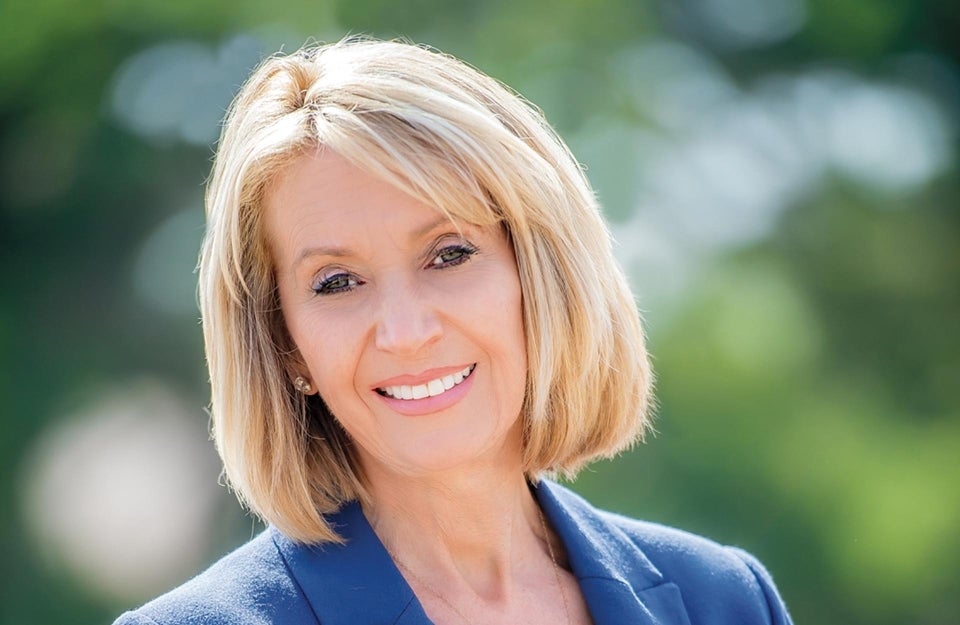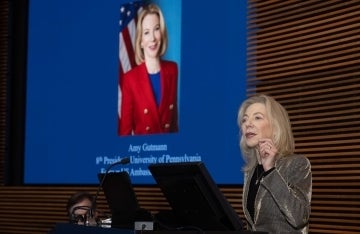National Academy of Sciences President Marcia McNutt Delivers 2016 Annenberg Lecture
McNutt discussed best practices in science communication and how they have shifted over time.

What are best practices in science communication today? How do science communicators most effectively present research to various audiences interested in different aspects of it? How has science communication changed in recent years? Those questions provided the framework of the 2016 Annenberg Lecture, delivered on October 27th at the Annenberg Public Policy Center by Marcia McNutt, president of the National Academy of Sciences (NAS).
Drawing on her experience as a geophysicist, former director of the U.S. Geological Survey, and the 22nd president of the NAS, McNutt spoke about contemporary means for reaching a variety of audiences in “Beyond ‘One Size Fits All’ — Communications in Science: The Why, How and When.” Watch the full video from the NAS YouTube channel:
In the lecture, which was jointly sponsored by the Annenberg School for Communication and the Annenberg Public Policy Center (APPC), McNutt focused on a checklist of tools for developing an effective science communication plan. For instance, McNutt said, it’s important to know who your audiences are. At one time, the audience for an NAS research report might have been principally limited to the government agency sponsoring the work — and communicating the results might have meant presenting that agency with a report, with any further dissemination coming from the agency.
Not anymore. Today the message might need to reach not just the sponsors of the research, but Congress, the academic community, the press, the public, and other interest groups. And it might be distributed in print, but also formatted for an iPad, the web, and smartphone, and be presented through a public symposium and classroom posters.
Who delivers the information is another key question, McNutt said: “You need to get a trusted face to deliver the message.” In her hometown of Monterey, Calif., McNutt said, you might want Art Jarrett, a local meteorologist who delivers the surf reports, to advise people about climate information. But when talking with the research community, you might turn instead to Mike Halpert, the deputy director of the National Oceanic and Atmospheric Administration’s climate prediction center, as a “trusted voice.”
McNutt also discussed “choosing the right channel” for information in a complex digital world, avoiding hype and bias in presenting the results, and quickly acknowledging when a mistake has been made.
McNutt’s talk was preceded by remarks from APPC Director Kathleen Hall Jamieson and Annenberg School Dean Michael X. Delli Carpini.
Media Contact
Michael Rozansky
(215) 746-0202
michael.rozansky@appc.upenn.edu



